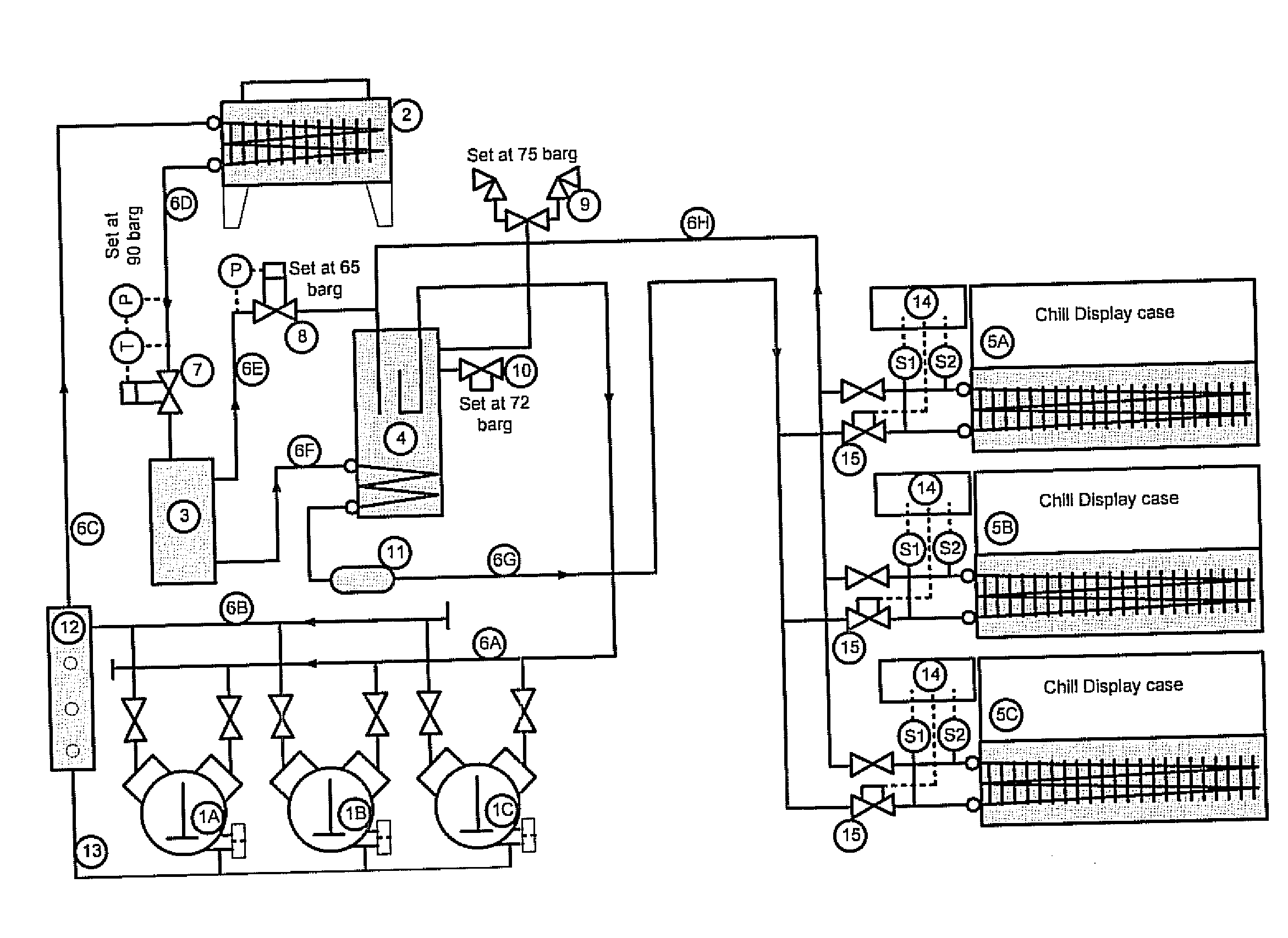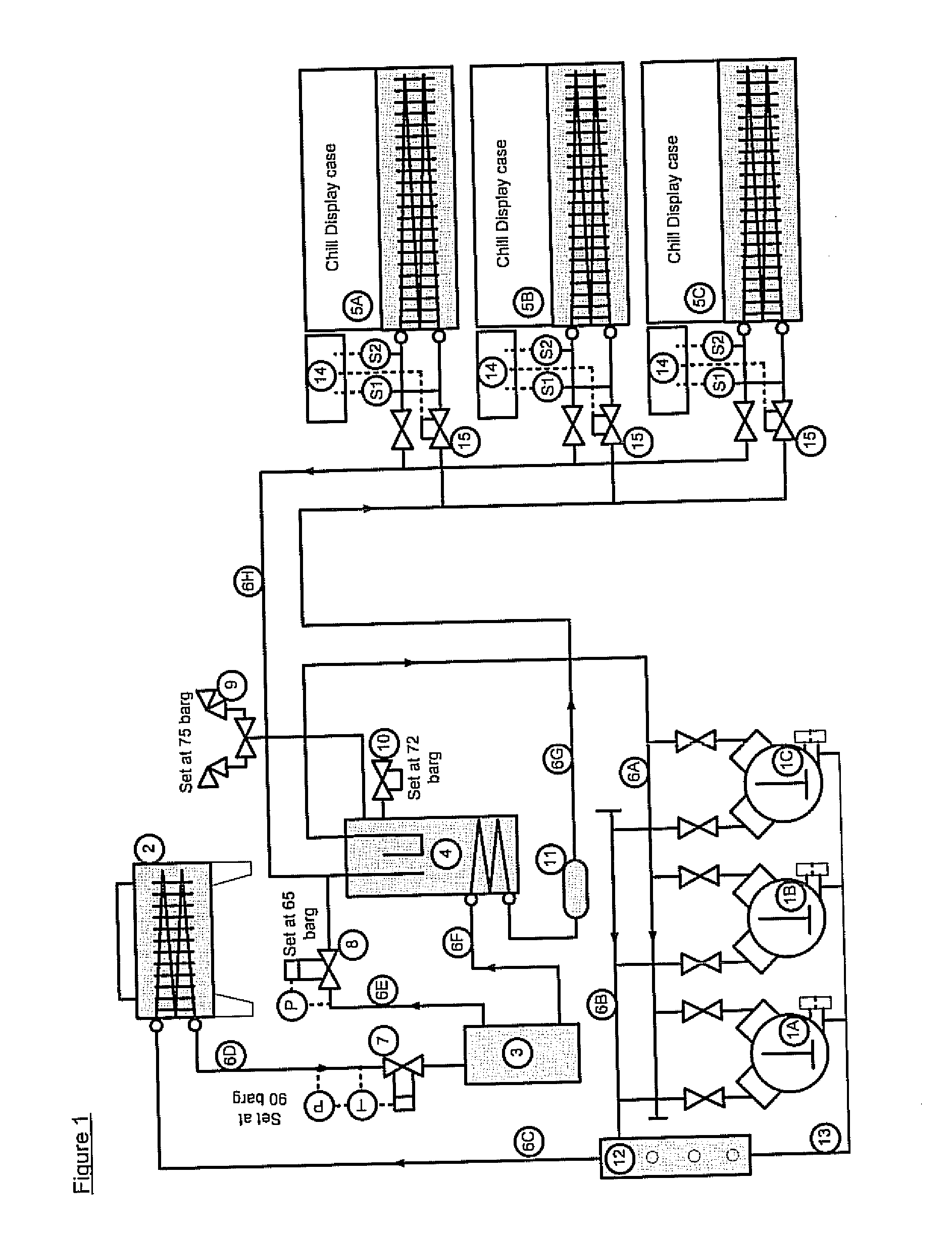Refrigeration system
a refrigeration system and high-pressure technology, applied in the field of refrigeration systems, can solve the problems of limited possibility of accumulation of refrigerant on the high-pressure side, lack of refrigerating capacity, and inability to meet the needs of larger-scale distributed systems, etc., to achieve novel valve control, high pressure, and loss of heat transfer performance
- Summary
- Abstract
- Description
- Claims
- Application Information
AI Technical Summary
Benefits of technology
Problems solved by technology
Method used
Image
Examples
Embodiment Construction
[0025]One embodiment of the invention is illustrated schematically in FIG. 1.
[0026]In this system the refrigerant carbon dioxide is used for cooling of chilled food display cases in a supermarket. A set of one or more compressors (1A, 1B etc) pump refrigerant gas to a high pressure condition at which it can reject heat to atmosphere or some other cooling medium. The gas is conducted from the compressor(s) through pipes (6B, 6C) to a heat rejection device (2). From the heat rejection device the cooled refrigerant passes through pipes (6D, 6F) to a heat exchanger located in the receiver (4) and from there through pipes (6G) to a set of one or more system evaporators (5A, 5B etc).
[0027]When the temperature of the heat sink (the zone to which heat is rejected from heat rejection device (2)) is higher than approximately 25° C. then the compressors will be required to raise the carbon dioxide gas to a supercritical pressure, typically in the range 80 to 120 bar absolute. This can be descr...
PUM
 Login to View More
Login to View More Abstract
Description
Claims
Application Information
 Login to View More
Login to View More - R&D
- Intellectual Property
- Life Sciences
- Materials
- Tech Scout
- Unparalleled Data Quality
- Higher Quality Content
- 60% Fewer Hallucinations
Browse by: Latest US Patents, China's latest patents, Technical Efficacy Thesaurus, Application Domain, Technology Topic, Popular Technical Reports.
© 2025 PatSnap. All rights reserved.Legal|Privacy policy|Modern Slavery Act Transparency Statement|Sitemap|About US| Contact US: help@patsnap.com


